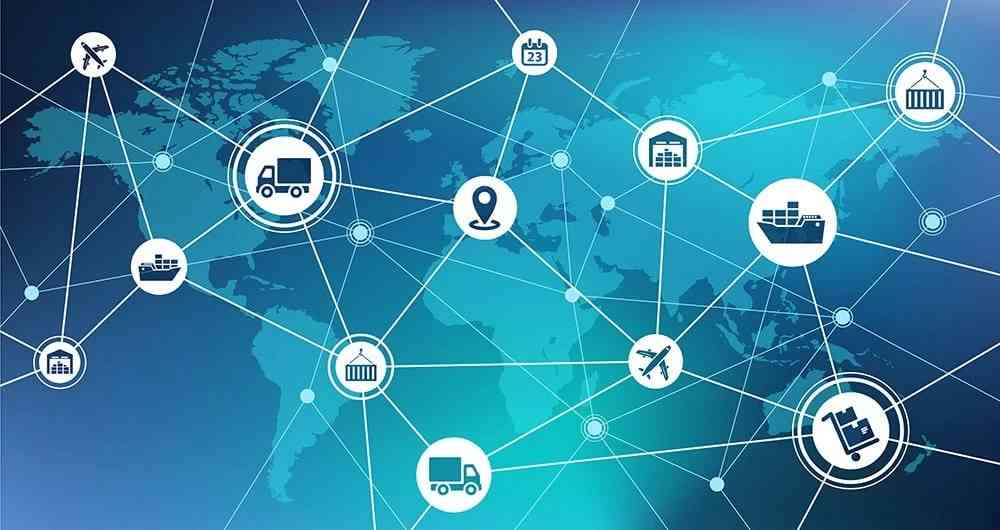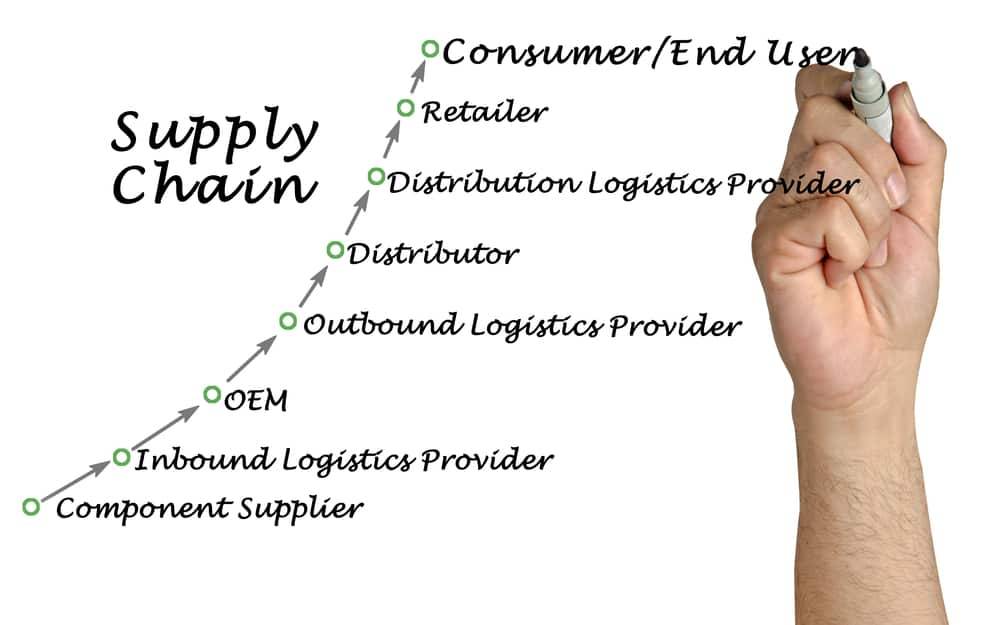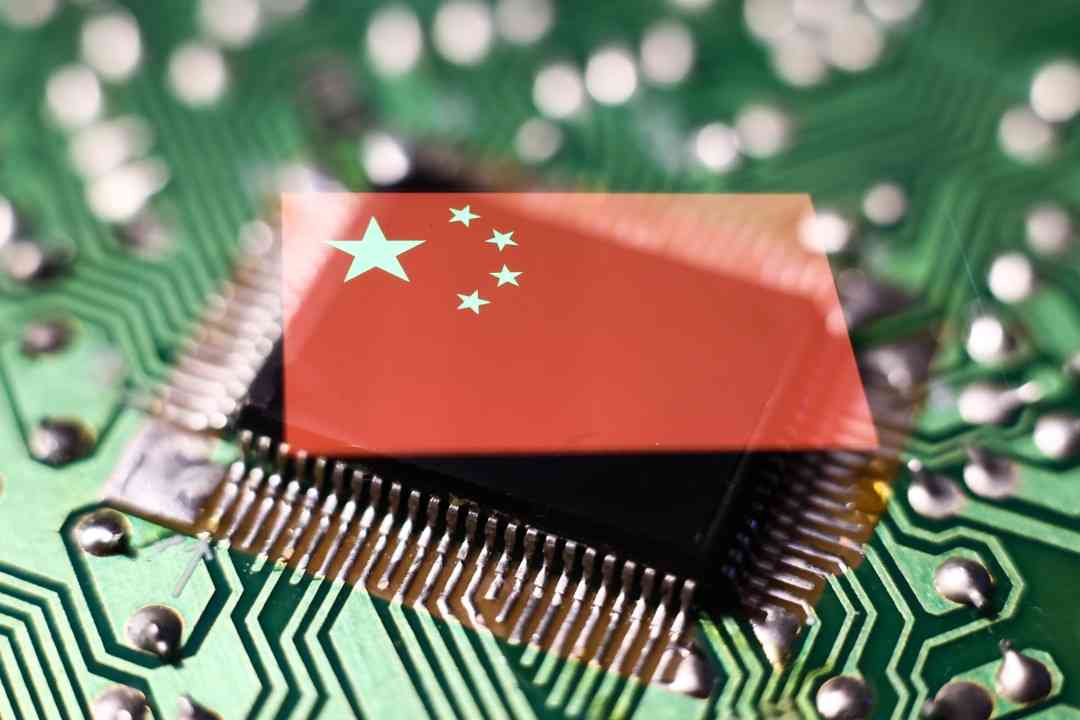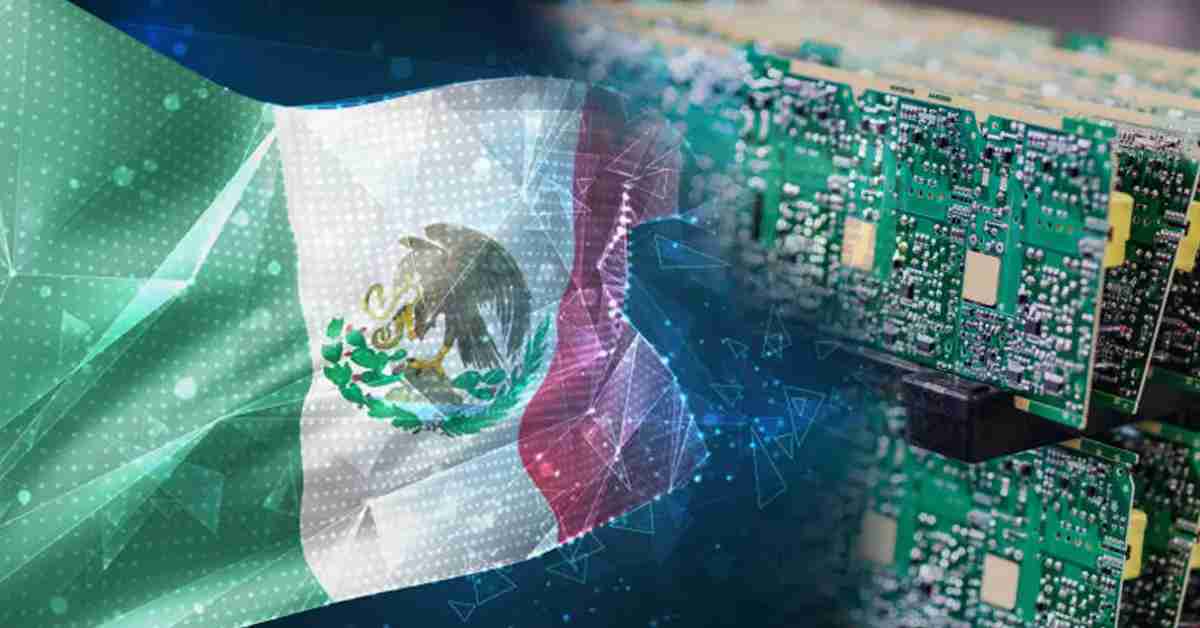Navigating the Electronic Component Supply Chain: A Guide to Sourcing from China and Mexico
Navigating the Electronic Component Supply Chain: A Guide to Sourcing from China and Mexico

The electronic component supply chain is an essential artery that supplies the engines of progress in the modern industrial world, where technology drives growth and innovation. Electronic components are fundamental to our interdependent society, appearing in everything from the contemporary cell phones we use daily to the complex circuitry that drives high-tech vehicle systems. To succeed in today's cutthroat marketplaces, companies need to have a firm grasp of how to efficiently traverse the supply chain, which is a dynamic ecosystem.
Using China and Mexico as case studies, this all-inclusive guide aims to clarify the complexities of acquiring electronic components. Businesses must manage the opportunities and constraints these locations present with elegance since they are world leaders in electronic component production and distribution. This guide will help anyone, from seasoned pros to newbies trying to get into the electronic components business, improve the efficiency of their supply chains and make better sourcing decisions.
Let us begin our exploration by learning about the history and setting of the supply chain for electronic components. Every link in the supply chain, from China's thriving manufacturing centres to Mexico's specialized terminal facilities, is essential in getting high-quality components to consumers in a wide range of industries. The complexity and opportunity for strategic sourcing decisions can be unlocked by comprehending the interaction between component manufacturers, distributors, terminal factories, and end-users.
In this article, we'll answer important questions like:
● What should businesses think about when they buy electronic parts from China?
● What advantages do Mexican terminal plants bring to the supply chain, and what services do they provide?
● In the supply chain for computer components, what are the best ways to keep quality assurance high, manage risks, and encourage people to work together?
● How can businesses use the information in this guide to improve the reliability of their supply chains and make their sourcing plans better?
This article aims to give businesses the information and tools they need to successfully navigate the electronic component supply chain by answering these questions and more. In the ever-changing world of buying electronic parts from China and Mexico, this guide will help you find the best deals, trustworthy suppliers, and new ways to get your parts.
Overview of Electronic Component Supply Chain

The electronic component supply chain is a complicated web of people, businesses, and processes that create, make, ship, and put electronic parts into many products. You can't say enough good things about it because electronic parts make modern technology possible. They power everything from computers and smartphones to cars and medical gadgets.
At the heart of the electronic component supply chain are several vital entities:
Component Manufacturers
The electronic component supply chain is a complicated web of people, businesses, and processes that create, make, ship, and put electronic parts into many products. You can't say enough good things about it because electronic parts make modern technology possible. They power everything from computers and smartphones to cars and medical gadgets.
Distributors
Distributors are middlemen between contract and original equipment manufacturers (OEMs), component makers, and end customers. They keep a large variety of components from different manufacturers in stock, giving firms choice and ease when it comes to sourcing. Distributors oversee order fulfilment, inventory control, and logistics, all of which are critical to maintaining the effectiveness of the supply chain.
Terminal Factories
Terminal factories specialize in the last phases of the electronic components production process. They are often referred to as assembly and packaging facilities. Manufacturers supply them with raw components, and they handle packaging, testing, assembly, and customization. By getting components ready for integration into final goods like industrial machinery, automobile systems, and electronic devices, terminal factories provide value to components.
End-Users
Businesses and industries incorporating electronic components into their systems or products are considered end-users. This includes original equipment manufacturers (OEMs) that make consumer electronics, automakers that build electronic systems into cars, manufacturers of medical devices that create healthcare technology, and businesses in the industrial sector that use electronic controls to automate processes and increase productivity.
The supply chain for electronic components is interdependent and interrelated, and every link in the chain is essential to the smooth transition of components from manufacturing to final use. This interconnectedness has a significant effect on businesses in a variety of industries:
● Efficiency and Innovation: Businesses may effectively access a large variety of electrical components through a well-functioning supply chain, which promotes innovation and product development.
● Quality and Reliability: Collaboration between component manufacturers, distributors, and terminal factories ensures quality assurance, compliance with industry standards, and a reliable supply of components.
● Global Reach: The supply chain's worldwide reach allows organisations to acquire components from multiple countries, utilizing cost advantages, specialist expertise, and market access.
● Supply Chain Resilience: Businesses can make their supply chains more resilient and less likely to break down by working with various providers, managing risks, and encouraging employees to work together.
The electronic component supply chain is an important ecosystem that supports creativity across industries, advances technology, and boosts economic growth. Businesses need to know how the supply chain works and its main parts to improve their sourcing strategies, make sure the chain is resilient, and get high-quality goods to customers.
Sourcing Electronic Components from China

China is a major player in the global market for electrical components. It is a centre for manufacturing, innovation, and integrating the supply chain. China's importance in this field comes from its solid industrial infrastructure, a large pool of suppliers, technological know-how, and low prices. Companies worldwide get a wide range of electrical parts in China, such as displays, sensors, microcontrollers and semiconductors. Buying electrical parts from China does, however, come with pros and cons that businesses must consider carefully.
Significance of China in the Global Electronic Components Market
China plays a complex and vital role as a significant player in the world market for electronic parts. China is a popular place to source goods for the following principal reasons:
Manufacturing Capacity
China can make a considerable number of things. It has modern factories that can make a lot of computer parts quickly and efficiently. With this ability, companies can handle big orders and effectively meet market demand.
Technological Advancements
Chinese companies keep putting money into research and development, which leads to improvements in the technology used to make computer parts. Ultimately, this leads to new ideas, better products, and competitive products on the global market.
Cost-Effective Solutions
China provides economical electronic component solutions with favourable labour rates, economies of scale, and competitive pricing. Businesses looking for reasonably priced, high-quality components for their goods are drawn to this cost advantage.
Supplier Diversity
The market for electronic components in China is broad, with many providers specializing in different component categories. Because of this diversity, companies can access a wide range of products, find specialized components, and investigate customization alternatives.
Process of Sourcing Electronic Components from China
Supplier Selection Criteria
Businesses need to consider several factors when buying electronic components from China to select trustworthy and dependable vendors. Necessary standards consist of the following:
● Reputation and Reliability: Assess vendors' standing, performance history, and dependability in providing high-quality parts.
● Quality Assurance: Verify that vendors follow strict quality guidelines, implement quality control procedures, and offer product certificates.
● Production Capacity: Evaluate the capabilities of suppliers to satisfy your lead time expectations, scalability needs, and demand volume.
● Compliance and Certifications: Ensure vendors follow industry rules, ethical standards, and environmental requirements. Seek certifications in quality management, such as ISO 9001.
Quality Assurance Measures
It is imperative to uphold quality assurance when procuring electronic components from China. Put the following actions into action:
● Supplier Audits: Every day, visit the facilities of your suppliers to observe how they manufacture their products, maintain quality control, and adhere to specifications.
● Product Testing: Take advantage of internal testing resources or outside testing services to confirm electrical components' dependability, performance, and quality.
● Traceability: Maintain component traceability across the supply chain to quickly detect and resolve quality concerns. Establish documentation and traceability methods to promote accountability and transparency.
Intellectual Property Protection
When sourcing from China, intellectual property (IP) protection is crucial. Use the following tactics:
● Confidentiality Agreements: You can keep your suppliers' unique ideas, technologies, and private information safe by telling them they will not share it.
● IP Rights Enforcement: Keep an eye on your IP rights and use the law to protect them so that no one else can use, copy, or infringe on them without your permission.
Supply Chain Resilience Strategies
Build resilience into your supply chain by:
● Diversifying Suppliers: Work with more than one provider to lower the risk of problems in the supply chain, dependencies, and changes in price or demand.
● Buffer Stock: Keep a buffer stock of essential components on hand to protect against unanticipated demand surges, lead time fluctuations, and shortages of supplies.
● Contingency Planning: Create backup plans for suppliers, sourcing channels, and logistics choices in case of unforeseen events, natural disasters, or geopolitical unrest.
Electronic Components Landscape in Mexico

Mexico has become a significant player in the global industry for electrical components because it has a good location, a skilled workforce, modern infrastructure, and an environment that is good for business. The country is vital in electrical components because it has terminal factories specializing in assembly and packaging and a large network of distributors serving many industries. Let's take a closer look at what Mexico has done for the electronic components business.
Role of Mexico in the Electronic Components Industry
Terminal Factories
Terminal factories in Mexico are essential at the very end of the supply line for electronic parts. Before they are put together in finished goods, these facilities are experts at putting together, testing, packaging, and customizing parts. These things show how important terminal companies are in Mexico:
● Value-Added Services: To meet the needs of each customer, terminal factories offer value-added services like customizing parts, kitting, labelling, and putting together products.
● Cost-Effective Solutions: Competitive labour costs, closeness to big markets like the US, and good logistics all make Mexico an excellent place to find cost-effective ways to package and put together parts.
● Quality Standards: International quality standards are followed by terminal factories to make sure that the quality of their products is always the same, that they are reliable, and they follow all industry rules.
Distribution Network
Terminal companies follow international quality standards to ensure that the quality of their products is always the same, that they are reliable, and that they follow all industry rules.
● Key Players: Avnet, Arrow Electronics, Future Electronics, and Mouser Electronics are a few of the major distributors of electronic components in Mexico. These distributors provide technical assistance, logistical services, and extensive product catalogues.
● Product Portfolios: A wide variety of electronic components, such as semiconductors, passive parts, connectors, sensors, and electromechanical parts, are supplied by distributors in Mexico. They serve the automotive, consumer electronics, healthcare, telecommunications, and industrial automation sectors.
● Logistics Considerations: Mexican distributors provide effective logistics solutions, such as order fulfilment, inventory control, warehousing, and distribution routes, to guarantee that components are delivered to clients on time.
● Regulatory Aspects: To guarantee product quality, safety, and legal compliance, distributors adhere to industry standards, import/export laws, and regulatory criteria.
Services Offered by Terminal Factories in Mexico
● Assembly and Packaging: Electronic component assembly and packaging, including wire bonding, encapsulation, sealing, surface mount technology (SMT), and through-hole assembly, are the areas of expertise for terminal factories.
● Testing and Quality Control: Terminal factories make sure that components fulfil performance criteria, reliability standards, and specifications by putting them through rigorous testing and quality control procedures.
● Customization and Kitting: Terminal factories provide kitting services for bundled components that are customized to meet the demands of the customer, in addition to customization services such as component labelling, marking, and programming.
● Product Assembly: Terminal factories offer product assembly services, putting together parts into completed goods or subassemblies in accordance with the designs and specifications of their clients.
Value-Added Capabilities and Quality Standards
Mexico's terminal factories offer value-added capabilities that improve the supply chain for electronic components:
● Efficient Supply Chain Integration: As part of the larger supply chain, terminal factories work together with distributors, makers, and end users to enhance efficiency and meet customer needs.
● Technical Expertise: Terminal factories hire skilled technicians, engineers, and quality assurance workers who know how to test, assemble, and inspect electrical parts.
● Flexibility and Customization: Terminal factories let you change how things are made, so you can make changes, make prototypes quickly, and get things back to the market soon to meet changing market needs.
● Compliance and Certifications: International quality standards, certifications, and government rules are followed by terminal companies to ensure the quality of their products, their dependability, and their compliance with industry standards.
Landscape of Electronic Components Distributors in Mexico
Key Players: Some of the biggest companies in Mexico that sell computer parts are
● Avnet: A global company that sells a lot of different electrical parts, as well as supply chain solutions and services that add value.
● Arrow Electronics: A major distributor that offers a wide range of products, technical help, and logistics services to a wide range of industries.
● Future Electronics: focuses on helping OEMs and contract manufacturers with their supply chains and distributing semiconductors.
● Mouser Electronics: focuses on giving electronics workers and fans the newest technologies, fantastic new products, and design help.
● Rantle East Electronic: A prominent distributor that provides an extensive array of products, technical assistance, and logistics solutions across diverse industries.
Product Portfolios: focuses on giving electronics workers and fans the newest technologies, fantastic new products, and design help.
Logistics Considerations: Distributors make sure that all logistical processes—including order processing, inventory control, warehousing, and delivery services—are carried out effectively for clients in Mexico and beyond.
Regulatory Aspects: To guarantee product quality, safety, and regulatory compliance, distributors adhere to import/export laws, customs procedures, and industry standards.
In summary, wholesalers and terminal manufacturers that makeup Mexico's electronic component landscape are essential players in the global supply chain. Distributors provide access to a variety of product portfolios, logistics solutions, and regulatory compliance, while terminal factories offer value-added capabilities, quality standards, and customisation services. They all work together to create a vibrant and dynamic environment that promotes efficiency, innovation, and expansion in the electrical components sector.
Best Practices and Recommendations for Navigating the Electronic Component Supply Chain
In order to optimize sourcing strategies, improve supply chain efficiency, and reduce risks, it is necessary to apply critical best practices and strategic advice when navigating the electronic component supply chain. The following are some crucial best practices and valuable suggestions for companies in the electronic components sector:
Building Collaborative Relationships:
● Encourage candid dialogue and cooperation between distributors, suppliers, terminal manufacturers, and other supply chain participants.
● Form enduring alliances founded on mutual respect, trust, and a shared commitment to innovation, cost-cutting, and quality enhancement.
Continuous Evaluation and Improvement
● Assess distributors, terminal factories, and suppliers on a regular basis using performance indicators, quality requirements, delivery schedules, and client feedback.
● Continuous improvement efforts like Kaizen concepts, Six Sigma techniques, and lean manufacturing practices should be put into practice to improve operational efficiency and product quality.
Risk Management
● Determine and evaluate the risks in the supply chain, such as shortages in supplies, geopolitical unrest, natural disasters, problems with quality, and difficulties adhering to regulations.
● To reduce interruptions and guarantee supply continuity, create risk mitigation strategies, backup plans, and business continuity procedures.
Compliance with Ethical Standards
● Follow moral guidelines, CSR (corporate social responsibility) procedures, and sustainability principles during the sourcing, production, and distribution processes.
● Maintaining integrity and reputation requires adherence to anti-corruption measures, labour standards, environmental rules, and fair-trade practices.
Actionable Recommendations
Supplier Diversification
● Reduce dependence risks and increase flexibility by strategically, technologically, and geographically diversifying your suppliers to optimize your sourcing strategies.
● Consider factors including quality, cost competitiveness, innovation capacity, and compatibility with company values when assessing possible suppliers.
Supply Chain Visibility and Transparency
● Boost supply chain visibility by tracking inventory, predicting demand, and streamlining logistics with digital tools, data analytics, real-time monitoring systems, and cooperative platforms.
● Encourage openness in your interactions with suppliers by exchanging data on lead times, inventory levels, production plans, and performance metrics so that you can make well-informed decisions.
Quality Assurance and Testing
● To guarantee component compliance and dependability, implement strong quality assurance procedures, such as product testing, inspection procedures, quality control audits, and certification standards.
● Invest in quality management systems, automation solutions, and cutting-edge testing technology to uphold high standards of product quality and customer satisfaction.
Supplier Development and Training
● Work with suppliers to offer instruction, direction, and assistance in technology adoption, process optimization, quality control, and sustainable practices.
● Suppliers should be encouraged to engage in ongoing learning, skill development, and information sharing to promote innovation, efficiency improvements, and competitive advantages.
Supply Chain Resilience Planning
● Create thorough preparations for supply chain resilience that consider market volatility, demand unpredictability, supply chain risks, and possible interruptions.
● To reduce risks and guarantee company continuity, integrate crisis management procedures, risk mapping, business impact analysis, and scenario planning into resilience strategies.
Enterprises may enhance their efficiency, resilience, and integrity in managing the electronic component supply chain by implementing these best practices and practical suggestions. Critical success factors in today's dynamic and interconnected supply chain landscape include developing collaborative relationships, ongoing evaluation, risk management, adherence to ethical standards, supplier diversification, supply chain visibility, quality assurance, supplier development, and supply chain resilience planning.
Conclusion
In the electronic components sector, efficient supply chain management is essential to maintaining product quality, dependability, cost-effectiveness, and customer satisfaction. Businesses may increase the resilience and efficiency of their supply chains by fostering cooperative partnerships, adopting continuous review and improvement, controlling risks, and abiding by ethical norms.
To successfully source electronic components, firms must implement these insights and suggestions. More research and application of best practices will result in improved products, more robust supply chains, and ongoing competitiveness in the ever-changing market for electrical components. For further information and to streamline your electronic component sourcing from China, contact us at Rantle East Electronic. Our team is dedicated to ensuring you access the best products at competitive prices, empowering your business for success in the electronic components industry.
Kevin Chen
Founder / Writer at Rantle East Electronic Trading Co.,Limited
I am Kevin Chen, I graduated from University of Electronic Science and Technology of China in 2000. I am an electrical and electronic engineer with 23 years of experience, in charge of writting content for ICRFQ. I am willing use my experiences to create reliable and necessary electronic information to help our readers. We welcome readers to engage with us on various topics related to electronics such as IC chips, Diode, Transistor, Module, Relay, opticalcoupler, Connectors etc. Please feel free to share your thoughts and questions on these subjects with us. We look forward to hearing from you!







 Start With
Start With Include With
Include With


